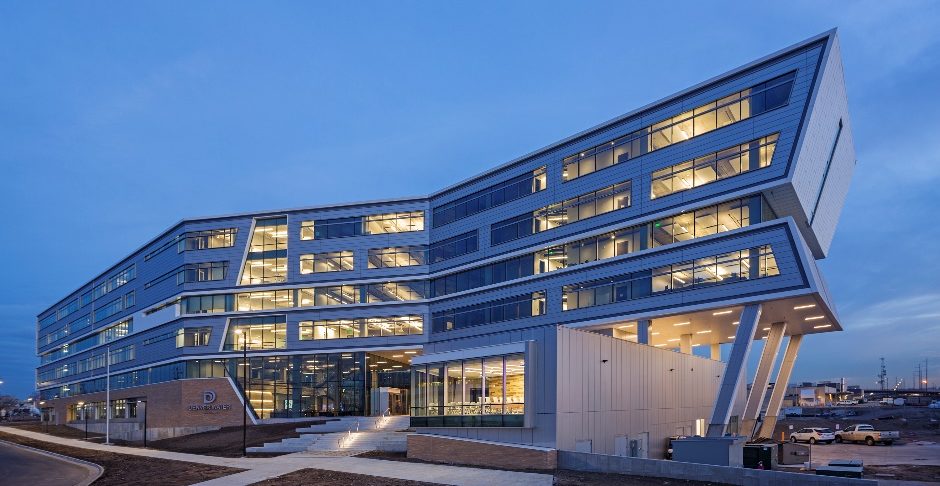By Laci LeBlanc
Global warming is no longer up for debate, and the next steps to address the climate crisis have been put in place. The Paris Agreement mandates net zero carbon emissions by 2050 and the Biden Administration has agreed to the same goal. The building sector accounts for 40 percent of all greenhouse gas emissions. These mandates will certainly result in major changes for the industry. Of course, the sole purpose for the change in practice is not just to meet mandates. Empowering industries to positively impact the global problem they helped create must remain top of mind.
That’s good news for Colorado. The state sports a wealth of renewable energy sources. And, city green building codes have joined state-wide renewable energy mandates to usher in change. As a result, Colorado is uniquely positioned to become a leader in net zero buildings.
What Is a Net Zero Energy Building?
In the simplest terms, a net zero energy building produces no carbon emissions. In other words, these green buildings replace the energy they use with the energy they make. This is achieved by reducing energy usage using renewable energy to offset usage. Additionally, existing structures can be retrofitted to reduce energy consumption and resulting emissions.
Denver defines “net zero energy” as a new building or home that is: 1. Highly Energy Efficient, 2. All-Electric, 3. Powered by Renewable Energy, and 4. Providers of Demand Flexibility for the Grid.
How Is Net Zero Achieved?
When the goal is net zero energy, there are four major factors to consider during construction: design, location, orientation, and the use of renewable energy.
There are two main design strategies for net zero buildings — active and passive. Active strategies focus on the production of energy, which is typically accomplished by incorporating renewable energy systems. Solar panels and wind turbines are common ways to offset the energy needs during both construction and operation.
Passive strategies, on the other hand, focus on reducing energy usage. Prudent design tactics, such as maximizing natural light and maintaining constant temperatures, are at the heart of passive design. With the range of climates found across Colorado, proper insulation is a key design feature. Ensuring precise air seals is key to creating an energy-tight building.
The building’s location and orientation are also crucial net zero factors. Buildings in areas prone to cloudy skies will have limited solar energy potential. Likewise, buildings oriented to use natural light can require 25% less energy. And solar panels work best when facing south or west. In other words, buildings in Aspen will have different specifications than those in Pueblo.
Renewable energy sources offset buildings’ energy usage. But, some locations simply won’t produce a sufficient amount to meet the need. This is where grid connections come in.
Connecting NZE Buildings to the Grid
Colorado ranks 7th in wind generating capacity. Still, not every part of the state can generate renewable energy. That’s why all buildings capable of generating renewable power should aim to produce more than they consume. The excess can be funneled back into the grid. Then, it helps power other buildings and the surrounding areas.
Clean energy bills are already spreading solar power access to renewable-starved areas. New green buildings can add to that access. As more net zero buildings join Colorado’s grid, the grid load is reduced. And, active strategies add sharable energy back into the grid. This helps to ensure buildings and communities stay powered despite changing local conditions.
Net zero buildings are the way of the future. To save the planet, the entire concept of building design must change. Energy conservation and renewal are key to making Colorado a leader in net zero.
NZE by 2030
Denver has a goal for all new buildings and homes to achieve net zero energy by 2030. Denver’s detailed NZE goals are:
- Net zero energy, all-electric new homes in the 2024 Building Code
- Net zero energy, all-electric new buildings in the 2027 Building Code
- New buildings perform as designed (performance verification) in the 2030 Building Code
Further detail and technical specifications on getting to net zero is detailed in Denver’s 2020 Net Zero Energy (NZE) New Buildings and Homes Implementation Plan. The plan is based on extensive stakeholder input from the Net Zero Energy Stakeholder Advisory Groups and feedback from the community. This NZE New Buildings and Homes Implementation Plan details the targets, supports, and considerations needed to reach net zero energy by 2030.
Laci LeBlanc is outreach manager at North Star Inbound, an award winning digital content marketing agency. Contact Laci at lacileblanc@northstarinbound.









